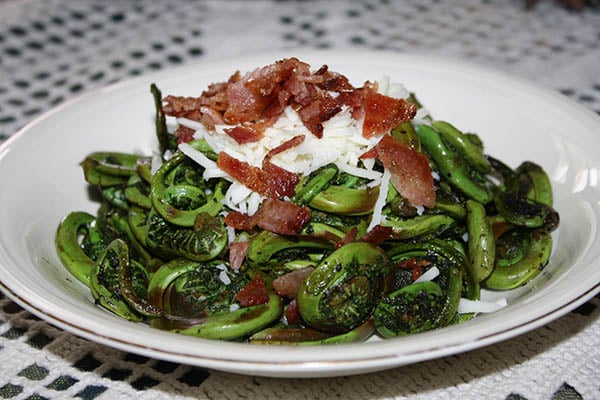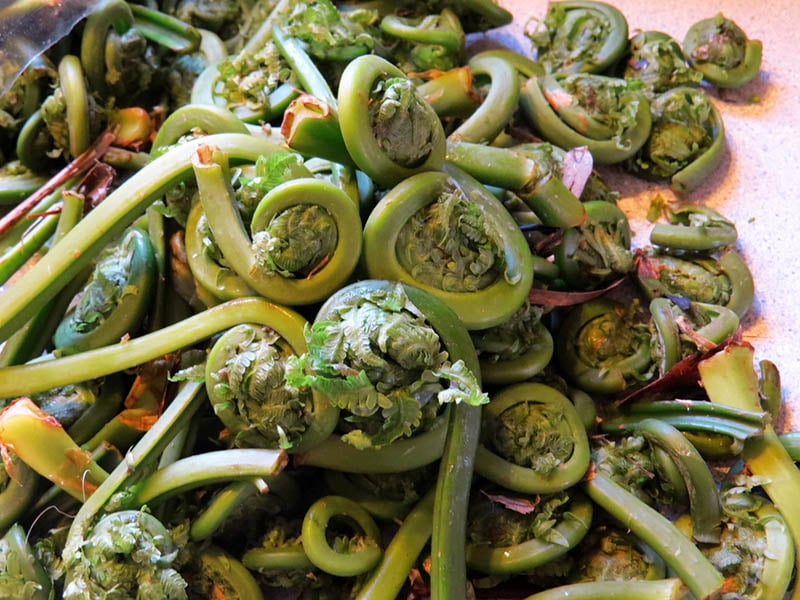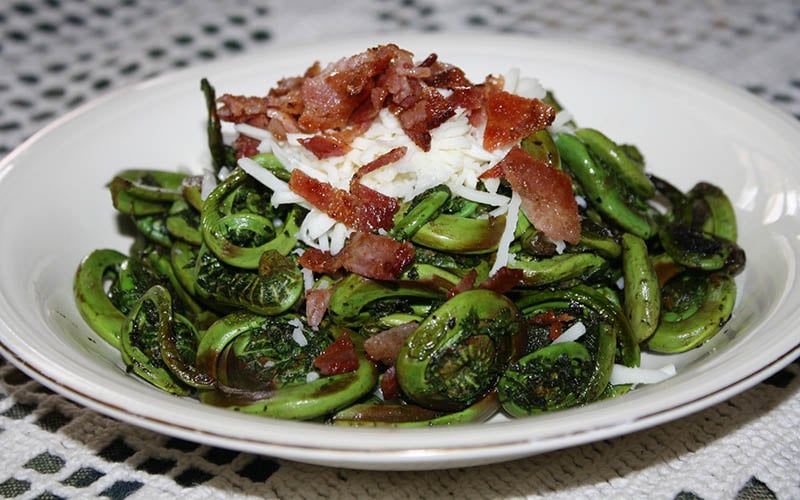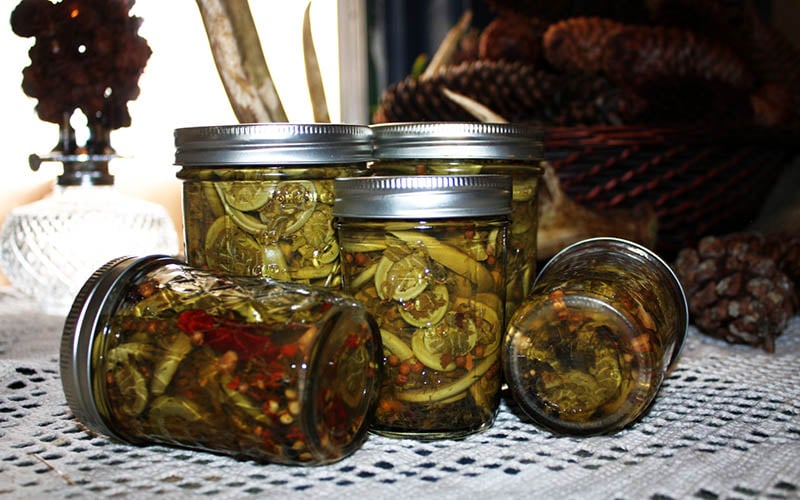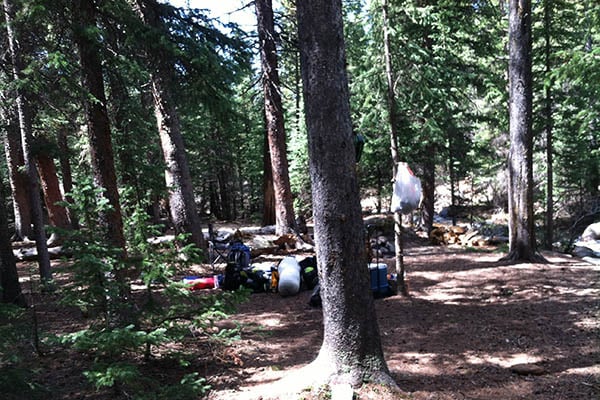Last Updated on
Fiddleheads are almost a holiday in the northeast. If we could pin down the date of the first fiddlehead popping through the duff it probably would be a holiday. It’s a day we wait for, talk about, and celebrate. Text messages, Facebook statuses and phone calls go out – fiddleheads are up!
Fiddleheads are the unfurled Ostrich fern (Matteuccia struthiopteris), coiled as it breaks ground. They got their name because of their resemblance to the top of a fiddle. Look for a U-shaped stem and a light brown papery layer in the coil, good indicators you’ve found the right variety. As with all wild harvested foods, ask for help and confirm the identification of what you’ve picked before you take the first bite.
It’s important to note that other ferns are referred to as fiddleheads but not all are edible; other varieties can be poisonous. You should always cook fiddleheads before consuming.
Fiddleheads grows in damp and wet areas, mainly along rivers and streams. They’re ready to be picked about the same time the black flies start to bite and have grown too large to pick by the time mayflies hatch. When they are two to three inches tall you snap the stem off at ground level. There’s no need to be specific about where to snap, they’ll “let go” in the right place. You want at least an inch of stem with the head.
Cleaning fiddleheads is a simple task. Remove the brown papery covering, and trim off the bottom of the stem.
If you don’t have the time or place to pick fiddleheads you can buy them from local pickers, or canned from groceries and online stores. They run between $2 and $5 per pound for fresh greens here.
The simplest ways to prepare fiddleheads are also the traditional ways. You want to protect their mild flavor when you steam or boil them so cook only until they are soft. A steaming bowl of fiddleheads with a pat or two of good butter, a sprinkling of sea salt and a small amount of fresh ground pepper (don’t lose the mild flavor to the pepper) are a spring treat. You might skip the butter and opt for a splash of apple cider vinegar instead.
Breaking tradition around here might get you a few funny looks but it’s worth it when you sit down to enjoy these recipes.
Bacon Fried Fiddleheads
- 1 pound of cleaned fiddleheads
- 6 slices of slab bacon, cured but unflavored
- Feta or other mild cheese, crumbled or shredded
Cook the bacon until crisp. Set aside to cool. Pan fry the fiddleheads in enough bacon fat to cover the bottom of the pan, until they are soft. While the fiddleheads cook, crumble five slices of bacon and eat the sixth slice because realistically, who can resist bacon.
Remove the fiddleheads from the pan when they are soft. They shouldn’t be greasy but if so, drain on a paper towel. Top with cheese while the fiddleheads are still hot enough to warm and soften the cheese, and then sprinkle with the crumbled bacon. You probably don’t need to salt the fiddleheads because of the salt in the bacon but you might want a little pepper.
Pickled Fiddleheads
- 6 pounds of fiddleheads, cleaned
- 6 cups apple cider vinegar
- 3 cups water
- 6 Tablespoons salt
- 1 Tablespoon pepper corns
- 3 Tablespoons pickling spices
- 1 Tablespoon dill seed
- 6 cloves of garlic, sliced
Blanch the fiddleheads in boiling water for one minute. Do this by bringing a gallon of water to a full rolling boil, then drop a quart of fiddleheads into the water. Sixty seconds starts when the water returns to a full rolling boil. Immediately remove the fiddleheads from the hot water and cool them in ice water to stop further cooking. Drain well so you won’t water down the brine.
In a non-reactive pan, combine all ingredients but the fiddleheads. Allow to simmer for 10 minutes then bring to a boil. While this is simmering, pack the fiddleheads loosely into sterilized pint or quart canning jars. Pour the boiling brine over the fiddleheads and divide the solid ingredients between the jars. Place sterilized canning lids and rings onto the jars and screw them on “finger tight.” They ring should be snug but loose enough to allow air to escape and the lids to seal as the jars cool.
You can spice this recipe up by adding a little crushed red pepper to the mix. My brother Rick likes hot and spicy pickled fiddleheads so I add the crushed red pepper to the jars I’ll be sending to him rather than heating up the entire batch of brine.
Once you’ve had your fill of fresh fiddleheads you can blanch them for two minutes following the same steps above (note time difference due to not pickling), drain them well, and freeze them for later.
